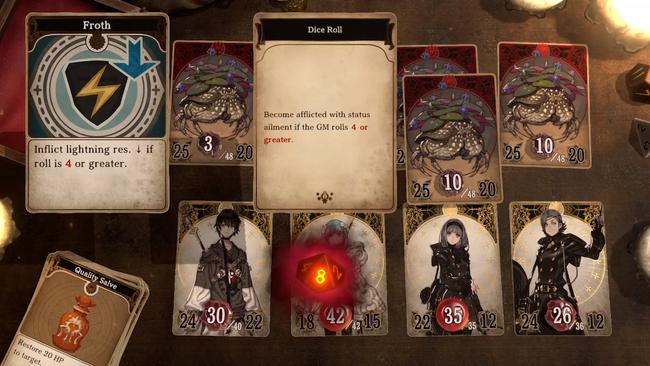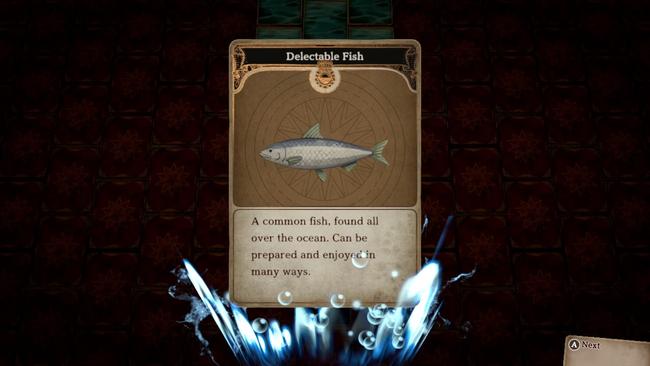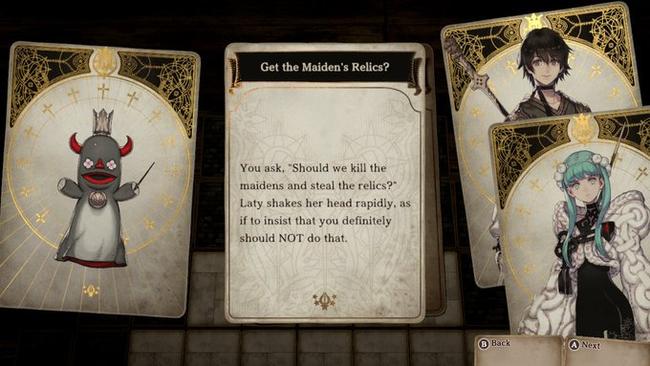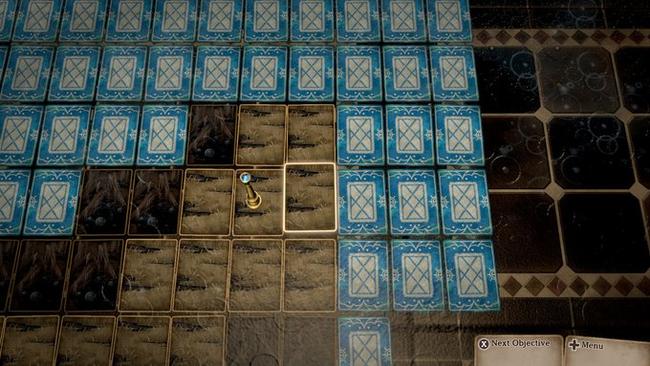Voice of Cards: The Forsaken Maiden Review
Just as suddenly as the first Voice of Cards was released relative to its announcement, another entry in the series surprisingly appeared. With not even half a year between the two games, I did wonder how different Voice of Cards: The Forsaken Maiden would be from The Isle Dragon Roars.
Set far away from any fearsome dragon, the isles of this region each have a maiden with an important duty. If the maiden fails in her duty, their respective islands are doomed to sink. On Omega Isle, the resident maiden Laty has failed her task and is now voiceless. Thankfully she makes a friend (and a half) and the duo travel to the other isles in the hope that she will learn from the other maidens and be able to save their home.

Taking place in the same series and with little time between them, it’s not surprising that the gameplay of this entry is almost entirely the same. Even the mini-game in the town’s parlours is nearly identical, though at least the opponents now change per area you play in. Despite the card aesthetic, overall this is a stock standard turn-based RPG. The cards still show their attack and defence values, and some moves require the roll of a dice.
While journeying in The Forsaken Maiden, your party will change members occasionally throughout. With each new island comes a new maiden and her attendant, giving you two rotating temporary party members joining Laty and the main character. When in the open ocean - and not on an island - you’ll instead be joined by a puppet-looking spirit named Lac, whom I didn’t mind getting kicked out of the team every time another twosome was added. The only new addition to combat is the duo skills unique to each pair, requiring a lot of gems (this game’s MP system) and for both characters to not be incapacitated. I think it’s a fun addition, especially since as you progress, your main character and Laty will have access to multiple different abilities they can use.
While your main duo can both have all their equipment changed, you can only give your temporary friends rings to hold. Likewise, their skills aren’t adjustable so there’s no customisation on their end. Temporary party members also don’t gain any experience, meaning that they’ll likely be quite a few levels lower than you are. Perhaps due to this, The Forsaken Maiden is slightly more difficult than its predecessor, and I did make use of healing items a lot more this time around. So I wouldn’t recommend this game as heartily to beginners, as the boss encounters are a bit more difficult and fights require a good focus on support. Given the mass frequency of battles, I was surprised to have not hit the maximum level by the end of the game. Still, I did not lose a match until the final encounter.

The main world map is almost entirely the ocean, which really made the game feel less varied than its predecessor. I nonetheless had a pretty good time filling in the maps by flipping every card I could find over. However, there also seemed to be a lot less variety in the random events I’d encounter in this game compared to the first. I only found one treasure hint this time, but that may simply be because I found the rest of the shipwrecks all on my own. On land, there are some short story encounters that thankfully don’t impact whether or not you can get the best ending. As I was a lot more callous in regards to the lives of various NPCs this time around, but really it’s not my fault someone ordered a monster attracting perfume.
It might be obvious due to the doomed predicament you seem to start in, but the tone is a lot less comedic this time around. That isn’t to say there aren’t funny moments, but the air of tragedy does linger throughout your journey. Overall, the narrative does progress with your own maiden and attendant, but there is an episodic nature that forms from your adventures with different maiden/attendant pairs. While many elements of the story were predictable, not every single aspect was, which I appreciated. Later in the game, it turns out that this is a prequel to The Isle Dragon Roars, but the connection between the two games is minimal, so there’s no need to play one to understand the other.

The blend of fantasy with modern fashion influence is even greater here, and I especially liked Laty’s chunky knitted jacket, while the main character had an almost casual look to him. As such, I didn’t feel the need to purchase any of the Nier Automata-themed DLC (though perhaps the doll Lac would be a bit less creepy). Most character designs are linked to their place of origin being colour-themed, ensuring that each maiden and attendant went well together. Though sadly there were no beauteous hunks like Bruno this time around. NPC types are mostly recycled, but I was surprised to see that only part of the bestiary is shared with many new opponents to face. While the large ocean can make the world feel pretty bland, there were some moments that looked especially great. In one forest the rain effect was stunning, and in other areas the game went with a monochromatic color scheme - although unfortunately, that did not carry into the battle screen.
This time around, I kept the new narrator on for the whole game, but I found he interrupted the beautiful music with inane comments far too much for my liking. Most of the soundtrack is largely relaxing even in the regular battles. Often it is accompanied by environmental sounds like the dripping of the cave. I enjoyed the music from the gentle guitar that flowed with the waves on the ocean, to the piano and percussion instruments used to match the tropical azure isle.

Once again I played a bit later from release, meaning I had the benefit of patches, so I had hardly any performance issues while playing on Switch. In fact, this time I played with the high-speed enabled (which was not initially available in the original game until after release) and I wholeheartedly recommend playing that way, as otherwise the animations in battle are just too darn slow. The only thing that ran slowly was one particular maiden’s move, which wasn’t much of a bother at all.
Voice of Cards: The Forsaken Maiden does do enough to stand out on its own, mostly due to the narrative. If you weren’t impressed with the first faux tabletop experience, the minor combat changes won’t be enough to persuade you. Likely, due to the closeness to its antecedent, there aren’t enough improvements in this entry to really qualify it as being notably better than the first. Nonetheless, it is a complementary experience that fans of the first are likely to enjoy just as much.